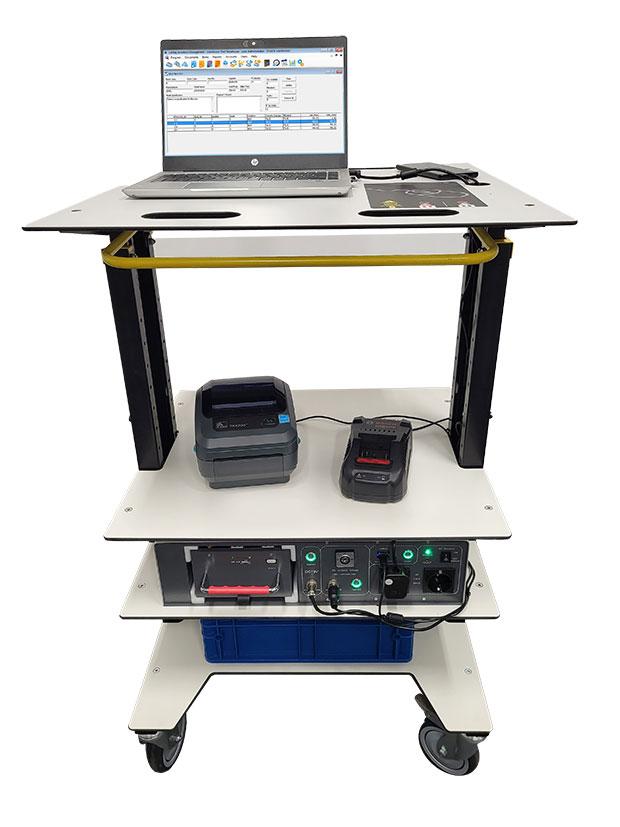Today’s operational logistics and fulfillment managers are faced with a tough equation to balance: the constant pressure to work leaner, faster, and better, all while maintaining the highest standards of accuracy.
 And if challenges abound, nowhere are they more acute than in the warehouse. Whether receiving or dispatching, complex multi-step work cycles have a host of vulnerabilities, not even the smallest of which can be overlooked. A few minutes lost on the warehouse floor can be magnified on the balance sheet. A few errors in data entry on stock picked or put away can have real repercussions on competitiveness.
And if challenges abound, nowhere are they more acute than in the warehouse. Whether receiving or dispatching, complex multi-step work cycles have a host of vulnerabilities, not even the smallest of which can be overlooked. A few minutes lost on the warehouse floor can be magnified on the balance sheet. A few errors in data entry on stock picked or put away can have real repercussions on competitiveness.
Of course, warehouse managers are, by now, well-versed in these issues. Across the industry, inbound or outbound, businesses have invested steadily in warehouse workstations designed to optimise the productivity of every link in the process chain.
Yet, despite sustained thought and investment, inefficiencies persist.
While a fixed workstation is ergonomically designed for speed of operation, gathering all the necessary equipment in one place, it cannot solve—and actually exacerbates—the issue of walk time. The distance between, for example, the station and the pick face (which is, more often than not, considerable) can have a huge impact on productivity. What’s more, while this presents a problem in and of itself, it also causes other, related, issues.
Walk time is a barrier not just to speed but to accuracy. Data entry errors can be generated as operatives rely on scribbled notes, or even on memory alone, to update the ERP back at their workstation. At a time when organisations depend on mission-critical insights from data systems, such failures in precision cannot be overlooked. In goods in or out, small inaccuracies leave behind records that don’t match the actual stock holding. This results in inventory that will likely remain on the shelves, never to be found again or phantom stock that was never there for the next customer’s order.
If a worker opts to carry their laptop or tablet in-hand to enter data as they go, there is rarely anywhere to put it as they try to move goods or update the system. The result of this clumsy way of working is, all too often, inaccurate data entries and broken devices. It also has implications for health & safety, magnifying the risk of accidents as workers attempt to do everything on the go.
So, how can these, often neglected, productivity challenges be dealt with?
The obvious answer is to enable operatives to take their workstation with them as they work.
Mobile Powered Workstations (MPWs) offer a host of productivity improvements, eliminating walk time between workstation and the pick face. They boost speed across the whole work cycle, minimising inaccuracies and empowering workers to get things done better, faster, and safer.
Using an ergonomic design that can be adjusted to suit each shift operative, a well-designed MPW allows for smooth and safe manoeuvring of the workstation across the warehouse floor, letting workers move freely, keeping their equipment at hand, such as a laptop, mouse, printer, scales, and tote storage.
Southgate, a key innovator in the development of MPWs, already supplies them to major logistics and fulfilment organisations in the UK and across Europe.
“Many of our customers wanted to resolve these issues of walk times and inaccurate data entries as their teams worked around the warehouse”, notes Dan Brasier, CEO of Southgate. “That’s why we designed the Southgate MPW. We calculated that it can cut costs by £5,691 per operative per year.”
“Our mobile power supply, designed specifically for this application, includes a two-battery solution each providing 16 hours of battery life – enough for two shifts per battery. Hot swap them and your MPWs keep working 24/7/365.”
It’s clear, then, that for many working in operational logistics and fulfilment, MPWs are already having a direct impact on cost reduction, efficiency and, ultimately, the bottom line.
To find out more about the Southgate MPW visit www.southgate-mpw.com




Comments are closed.